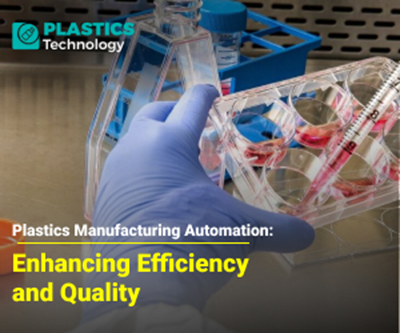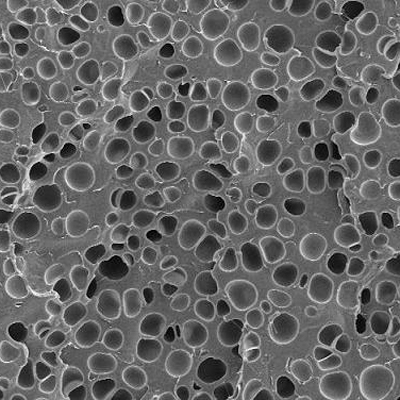Plastics Manufacturing Automation: Enhancing Efficiency and Quality

Introduction:
Plastics manufacturing has come a long way since its inception, evolving from simple handcrafted products to highly complex and precise items. With the ever-increasing demand for plastic products across various industries, manufacturers are constantly striving to improve their processes to enhance efficiency and maintain quality. One of the most significant advancements in this regard is the integration of automation into plastics manufacturing.
The plastics manufacturing industry has been profoundly transformed by automation, bringing forth a plethora of advantages. These include heightened production efficiency, enhanced product quality, waste reduction, and improved safety measures. This article will take an in-depth look at the realm of plastics manufacturing automation, delving into the myriad ways it is reshaping the industry and influencing its future direction.
The Evolution of Plastics Manufacturing
Before we dive into the role of automation in plastics manufacturing, let's take a brief look at how this industry has evolved over the years. Plastics were first developed in the early 20th century, and their popularity skyrocketed due to their versatility, affordability, and durability. Initially, plastic products were handcrafted, leading to inconsistencies in quality and production rates.
As demand for plastic products increased, so did the need for more efficient manufacturing processes. This led to the development of injection molding, one of the most common methods used in plastics manufacturing today. Injection molding allowed for the mass production of plastic items, but it still required a significant amount of manual labor.
A) The Rise of Automation
The true revolution in plastics manufacturing was ushered in by the advent of automation. Automation entails the utilization of machinery and control systems to execute tasks with minimal human involvement. Within the realm of plastics manufacturing, automation finds application across multiple stages of the production process, spanning from the handling of raw materials to the packaging of the final products.
Raw Material Handling: Automation begins with the handling of raw materials. Automated systems can precisely measure and mix the ingredients required for plastic production, ensuring consistency and accuracy. This eliminates the risk of human error in the mixing process, which can lead to product defects.
Injection Molding: Injection molding, a crucial process in plastics manufacturing, has seen significant automation advancements. Automated injection molding machines can operate continuously, producing large quantities of plastic parts with high precision. They can also monitor and adjust parameters such as temperature and pressure in real time to maintain consistent product quality.
Quality Control: Automation assumes a pivotal role in maintaining quality standards. Automated inspection systems employ cameras and sensors to identify flaws in plastic products, whether during or after the manufacturing process. This not only enhances product quality but also diminishes the necessity for manual inspections, resulting in time and labor cost savings.
Packaging and Labeling: Automation extends to the packaging and labeling of plastic products. Automated packaging machines can efficiently package products in various formats while labeling systems can apply barcodes, QR codes, and product information with precision.
B) Benefits of Plastics Manufacturing Automation
The adoption of automation in plastics manufacturing brings a multitude of benefits, both for manufacturers and consumers. Here are some of the key advantages:
Heightened Efficiency: Automation diminishes production cycle durations, enabling uninterrupted manufacturing and an overall efficiency boost. This empowers manufacturers to generate a greater number of products within shorter time frames, culminating in heightened productivity.
Improved Product Quality: Automation minimizes the risk of human error, leading to consistently high product quality. Precise control over production parameters ensures that each product meets the desired specifications.
Cost Efficiency: Although the initial investment in automation technology may be substantial, the long-term savings are considerable. Decreased labor expenses, minimized scrap rates, and enhanced energy efficiency collectively contribute to a comprehensive reduction in costs.
Waste Reduction: Automated systems generate less waste due to their precision and ability to optimize material usage. This is not only environmentally friendly but also reduces material costs.
Safety Enhancement: Automation curtails the necessity for manual labor in perilous environments, leading to an amelioration in workplace safety. This reduction in worker exposure to risks associated with heavy machinery operation and the handling of potentially hazardous materials is pivotal for ensuring a secure work environment.
Adaptability: Contemporary automation systems exhibit remarkable flexibility and can be readily reconfigured to manufacture diverse products. This adaptability empowers manufacturers to swiftly respond to evolving market demands, ensuring they remain agile and competitive.
Data Utilization: Automation systems generate copious amounts of data that can be scrutinized for trend identification, process optimization, and predictive maintenance planning. This data-centric approach has the potential to facilitate further enhancements in the realm of manufacturing.
Challenges and Considerations
While automation offers numerous advantages, it also presents some challenges and considerations for plastics manufacturers:
Initial Capital Outlay: The expense associated with introducing automation systems can be substantial, necessitating meticulous financial planning. Nevertheless, the enduring advantages frequently surpass the initial financial investment.
Skilled Workforce: The transition to automation may require retraining or upskilling the workforce to operate and maintain automated equipment effectively.
Integration: Integrating automation into existing manufacturing processes can be complex. It's essential to ensure that all systems work seamlessly together.
Maintenance: Automated machinery requires regular maintenance to ensure optimal performance. Manufacturers must have a maintenance plan in place to prevent downtime.
Data Security: With the increasing reliance on data in automated systems, protecting sensitive information from cyber threats becomes crucial.
Conclusion
Plastics manufacturing automation has transformed the industry, offering manufacturers a path to increased efficiency and improved product quality. While the initial investment and integration challenges may seem daunting, the long-term benefits are clear: reduced costs, higher productivity, and a more competitive position in the market.
As technology continues its relentless advancement, the significance of automation within the plastics manufacturing sector is poised to grow even further. Manufacturers who wholeheartedly embrace these innovations are strategically positioned to effectively cater to the escalating demands of both consumers and industries, all while taking strides to minimize their environmental impact. Plastics manufacturing automation isn't merely a passing trend; it unquestionably represents the future of the industry.
In the ever-evolving landscape of manufacturing, the trajectory is clear—automation is not merely a trend but a transformative force shaping the future of plastics manufacturing. As technology continues to advance, those who embrace and adapt to these innovations will not only thrive in the market but also contribute to a sustainable and efficient industry, meeting the demands of both consumers and environmental responsibility. The future of plastics manufacturing is bright, driven by the efficiency and quality enhancements brought about by automation.




